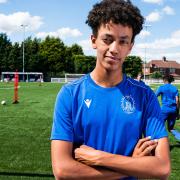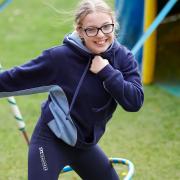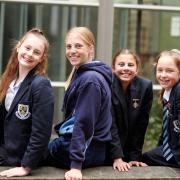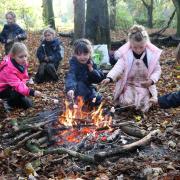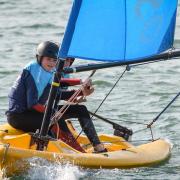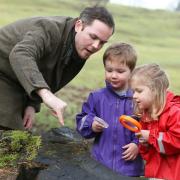More opportunities for young people are being created as independent schools break down barriers, reports David Marsh
Independent schools across the country have celebrated some outstanding examination results, a fact that will not surprise many people as academic excellence tends to come with the territory in this successful sector. Figures from the Independent Schools Council (ISC), which represents over 1,200 private schools including 58 in Yorkshire, show that one in 14 independent school candidates achieved three A* grades at A Level and half of entries recorded A* or A grades, nearly double the national average in 2015.
They are the sort of results that provide a springboard to entry to top-rated universities. Such excellence, however, costs. Average day school fees come in at over £12,000 a year, while the figure for boarders is more than double that. For many parents with the financial where with all, it seems to be a price worth paying.
The number of pupils currently attending schools represented by the ISC stands at over 517,000, more than at the start of the recession in 2008 and the highest number since such records were first kept in 1974. The number of pupils attending independent schools in the North is rising for the first time in years. It is clear the sector has weathered the economic downturn well and that places at independent schools remain highly valued.
Julie Robinson, the ISC’s chief executive, says that high academic attainment, while though important, is only part of the attraction. She said: ‘It’s certainly not just about academic achievement. Independent schools offer great facilities, excellent teaching and a broad range of extra-curricular and co-curricular activities involving things such as drama, art, music and sport. Parents want the whole package.
‘Some independent schools have a strong reputation for sport and that’s partly because of good facilities and partly because of good coaches on the staff.
‘Something like one-third of Great Britain’s medal winners in the London Olympics had attended independent schools. There is also a tradition of sporting competition among schools in the sector.
‘Soft value added is the term we use to demonstrate how schools promote confidence and independence among their pupils. A good pupil-teacher ratio allows for strong pastoral care. There is a great range of independent schools. Some are very selective, some have a broader intake, there are those that are strong in drama and music and others provide for special needs.’
The ISC brings together seven associations of independent schools and provides its members with a range of services. On its website it says it aims to ‘promote and defend the sector.’
Presumably defend it from its critics who include Leeds-born writer Alan Bennett. In an address given last year at King’s College Chapel, Cambridge, he described private education as unfair.
He said that ‘to educate not according to ability but according to the social situation of the parents is both wrong and unfair’. Deflecting the criticism, Robinson said independent schools were far more diverse and the fees more affordable that some people might imagine. She said: ‘Recent fee increases have been the lowest for many years. Schools have taken care with their financial planning. There have also been some mergers so schools can benefit from economies of scale.
‘An analysis of pupils will show that there are plenty from deprived postcodes and 29 per cent are from ethnic minority backgrounds. Independent schools are an engine of social mobility.’ A wide range of bursaries for families who need financial assistance helps ensure that a place at an independent school is not the preserve of the wealthy. Over 41,000 pupils benefit from means-tested bursaries or fee discounts and a further 130,000 receive other forms of bursary or scholarships. About 5,400 pupils pay no fees at all.
Far from operating in some sort of glorious isolation, there are many examples of independent sector schools working alongside state sector schools. About 95 per cent of ISC schools enjoy partnerships and link-ups with the state sector.
A prime example can be found here in Yorkshire. The York Independent State School Partnership has since 2007 worked to provide more opportunities for secondary-aged pupils outside of the normal school curriculum. It also aims to break down any barriers between independent and state schools in the city.
The partnership is made up of three of York’s independent sector schools – St Peter’s, Bootham and The Mount – and eight from the state sector. Activities include a series of masterclasses – lessons in Latin were over-subscribed, a summer school, residential courses, field trip, revision classes and preparation advice for university applications.
Robinson said: ‘All the schools involved benefit. Independent schools don’t want to separate themselves from the rest of the world; they want to be part of the country’s educational landscape.’
A new website, Schools Together, is to be launched soon to promote and encourage the development of more partnerships.










